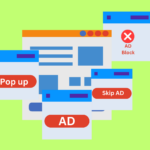
Welcome to Part 2 of STM’s guide to the black art of AM – bidding. Bidding can be the difference between a loser campaign and massive profit – but it’s hard to figure out, and there aren’t many guides out there. I’m aiming to change that.
Last week we looked at an overall bidding strategy to map out a traffic source. This week, we’re going to get more granular.
Bidding isn’t something that we can write a single universal guide to. So here are 5 bidding strategies that you can use on specific platforms, at specific times or in specific situations.
Bidding On “Quality Score” Platforms: FB, Adwords, Bing, other Quality Score platforms
Platforms that use some kind of “Quality Score” – Facebook, Bing and Adwords along with a few of the newest ad platforms just emerging – don’t respond well to an exploratory bidding strategy, or one that’s focused on bidding low.
Why? Because they use the performance of your ad to determine the price you pay per click. And just like on any other traffic source, the performance of your ad will be directly affected by the quality of the traffic your ad sees.
So the best strategy on any of these platforms is usually to bid high – even very high – at the beginning of your campaign. That’ll ensure you get the best quality traffic, which will ensure that your ads perform as well as possible. And that will usually mean that the price you pay for a click drops way below the price you’d be paying if you bid lower initially.
There are more – much more – detailed tips and tricks for optimising each of these platforms, but as an overall rule of thumb, this one will take you a long way toward optimised bidding on Quality Score platforms.
Bid Testing For Traffic Quality – Non-Quality Score Platforms
Not all impressions are created equal, even on straight bidding platforms like DSPs (Go2Mobi, Decisive, SiteScout, etc). Generally, if you bid higher within the range of bids for your targeting, you’ll get better **quality** traffic – less bots, better placements, and users more likely to convert.
A while ago Tom Fang ran a fascinating study of CPM against conversion rate over on the POF platform. It showed that – approximately speaking – ROI tended to stay the same as bids increased, because quality increased too.
However, that’s not true on all platforms and across all targeting. So what do you do?
Once you’ve mapped out the landscape for your bids, the best thing to do is to create 3 or 4 campaigns targeting a range of bids within the bidding range that will get you decent traffic – one at the top bid, one at about two-thirds up the range, one a third up the range, and one at the bottom of the range. Then let them run for a few days and compare their performance. You’ll soon be able to tell if there’s a quality difference.
Testing For Time Of Day Changes
Bids can change radically over the day as other advertisers’ budgets run out, or day-parting kicks in.
If you have the budget and the time, the best way to map this change out is to run a mapping campaign (as in Part 1) several times in a single day, keeping it paused the rest of the time. I’d recommend about a quarter of the way through the day, half way through the day, and three-quarters of the way through the day, where “day” here means your traffic source’s definition of the start and end of their day. (If the traffic source starts its day in your timezone, then test assuming US hours for the day, as that’s where most advertisers probably are.)
Beyond that, keep a close eye on the hourly volume of impressions you get. Watch for peaks and troughs. Try duplicating a campaign at a lower bid, one that normally wouldn’t get you enough traffic, and see if the traffic suddenly picks up at a certain point in the day.
Once you have this information you can use it to optimise your bidding. For example, if you discover there’s a lot of cheap, good-quality inventory late in the day as advertisers’ bids are exhausted, you can deliberately bid lower than you otherwise would to capture that cheap inventory and boost your ROI.
Non-Bid-Related Bidding Factors
It’s important to remember that on a lot of platforms, your bid is not the only thing that affects the volume of traffic you receive.
For example, on many DSPs, your daily budget will also throttle the number of impressions you get. If you’re bidding on a limited pool of traffic, that can often throttle your campaign to the point that you spend a lot less than your daily budget every day, as the DSP’s algorithms get their predictions a bit wrong. Try doubling or tripling your daily budget and watch the increase in impressions – sometimes you’ll need to have a daily budget of $100 to spend $33/day, for example.
On some platforms, available funds will also throttle your campaigns. In particular, if your available funds are very low but not zero (less than $100), that can result in your available impressions slowing to a crawl.
Finally, do check if the platform you’re on has any restrictions on content. On some DSPs, for example, some kinds of ad will be allocated only “non-brand” or low-quality traffic. Ask the platform’s support team if this is the case, or ask on STM. If it is the case, finding a way to get your campaign out of the low-quality bracket will often open up an enormous amount of additional, lower-competition/higher-quality inventory.
Use The Source’s Data To Double-Check Volume
Most platforms will have indications of how much volume is available in a specific country or a specific targeting combination. If they don’t, or if it appears to be out of date, you can and should also ask the traffic source’s support team what sort of volume is available for your targeting combination.
You can then use that number to check if there’s something reducing the amount of impressions you’re getting from where it should be. This is a very useful trick to diagnose issues like daily budget limits, ad quality problems, or even errors on the traffic source’s end.
Don’t be afraid to get in contact with your traffic source and ask them for advice – whilst they’re not completely impartial, it’s in their interests to help you spend money with them!
*And that’s it for this week! In the third and final part of the series next week, we’ll look at “PvP” bidding – sneaky tips and tricks to outsmart, out-bid and out-profit your competition.*





GIPHY App Key not set. Please check settings